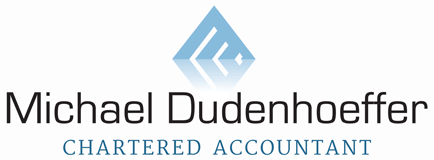How To Pay Yourself From A Corporation

Once you’ve incorporated your business, you may wonder what the best way to pay yourself is. After all, being able to take money out of the corporation is one of the primary reasons to operate a business. The end-goal of pulling money out of your corporation is definitely not an issue, you just have to make sure that the proper formalities or steps are followed so on paper the transfer of money from the corporation to you is on-side with CRA. If the proper steps aren’t followed, then CRA can assess some significant tax and penalties to you and/or your corporation which could add up but can be completely preventable if everything is done by the book from the beginning.
There are two basic choices:
- You can pay yourself through regular payroll the same as you would pay an employee. You would simply deduct income tax and CPP deductions and remit them regularly to CRA. You would then receive a T4 from the corporation at tax time and you would report this T4 on your personal tax return. You can use this method by itself or in conjunction with option #2.
- You can simply withdraw money from the bank account on a regular basis throughout the year and/or at irregular times as you need it and the activity is tracked in what’s called a shareholder’s loan account. For example, you withdraw cash from the company bank account during the year as you need it and the total of these cash withdrawals is $60,000 at the end of the year. This will be the total of the shareholder’s loan account at year-end plus or minus any other amount such as personal expenses paid by the corporation or business expenses paid by you.
As an accountant that regularly deals with corporations and their shareholders, I would recommend using a fixed and regular payroll salary only if you perform a regular and recurring task or tasks for the corporation. For example, if you owned a landscaping service and you worked regularly at a job-site most days. In this case, you could pay yourself a salary based on the hours you worked and an hourly rate or a set salary amount as part of the regular payroll cycle. You could then see how much money is left over in the business at the end of the year and take more money out by way of cash withdrawal or cheque from the bank.
The one consideration I would add at this point is to pay yourself a lower amount through payroll. For example, perhaps pay yourself what you would pay a supervisor or manager as an employee. Any extra earnings can be paid to yourself at year end. The main reason for this is because income earned through payroll is taxed as regular income on your personal tax return which is subject to your higher marginal tax rate. Once you are in the higher tax brackets by way of earning more income, then you could be subject to much higher tax rates than are actually necessary.
If you don’t pay yourself through payroll, then you can simply just withdraw money as you need it straight from the bank account throughout the year. The year-end accountant will appropriately deal with the total of the cash withdrawals in the shareholder’s loan account at year-end. The details of the shareholder loan and the implications of a bonus or dividend, I will explain in a different article.
The best approach, beyond the above general example, is to discuss your specific situation with your accountant. At MD Accounting, we can determine the best and most tax effective approach to paying yourself from your corporation.
Contact us to learn more.
